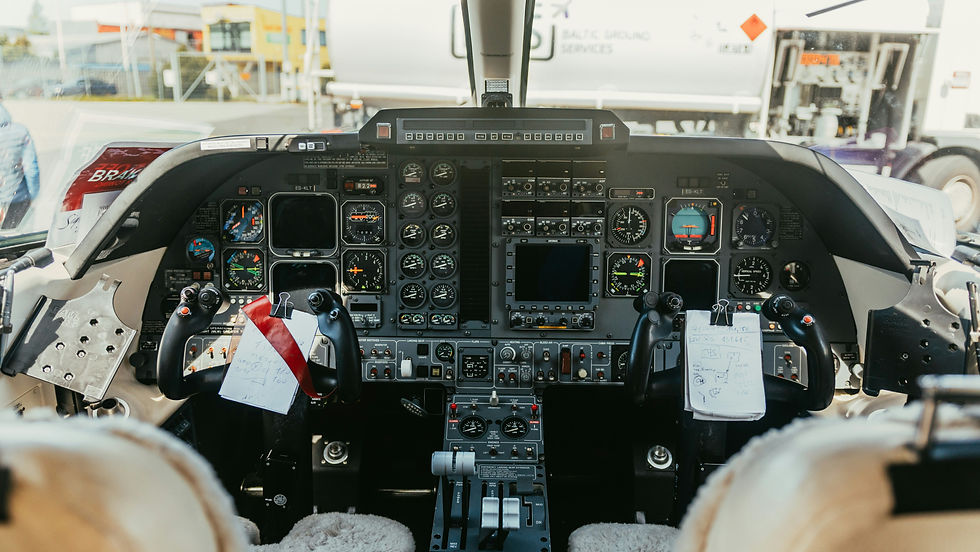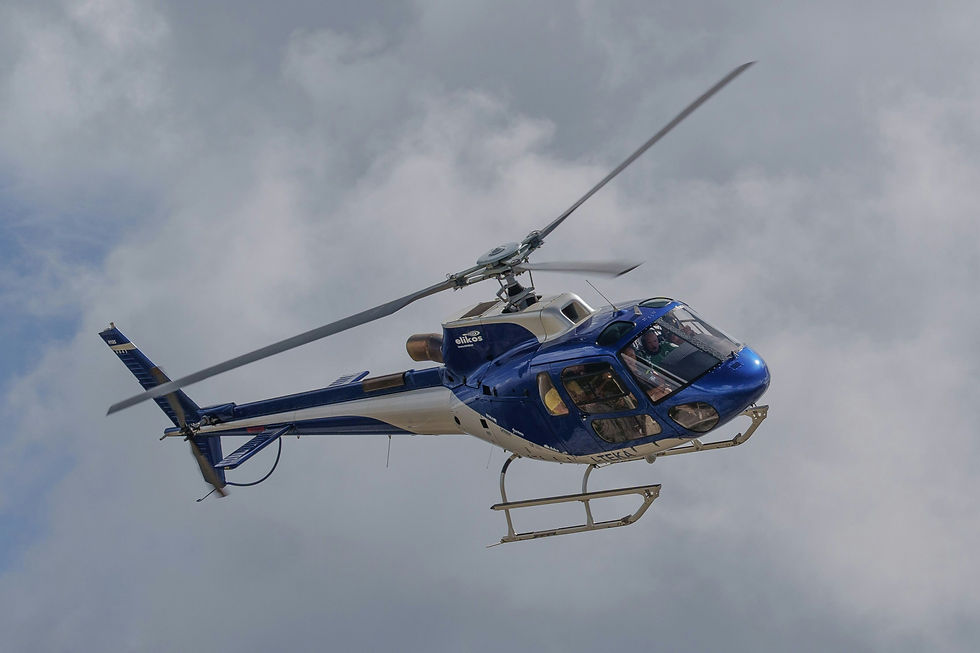Caribbean Flight Schools: What You’ll Really Pay for Pilot Training
- Glenn Allyn
- Aug 18, 2025
- 6 min read
Updated: Aug 19, 2025

Training to become a pilot in the Caribbean involves a serious financial undertaking, and tuition forms the largest single category of expenses. Depending on the flight school and island location, the cost to progress from a Private Pilot License (PPL) to a Commercial Pilot License (CPL) typically falls between \$50,000 and \ USD 100,000. The difference in cost is often linked to whether the program is based on FAA, EASA, or ICAO regulations, with internationally recognized pathways usually commanding higher fees.
Tuition Costs and Training Programs
Flight schools generally offer two primary program structures. The first is the integrated program, which covers all ground school, simulator training, and flight hours in a comprehensive package. This program provides clear structure and efficiency but requires a significant upfront financial commitment. The second option is the modular pathway, where students pay for each stage separately—starting with the PPL, then the Instrument Rating (IR), the Multi Engine Rating (MER), and finally the CPL. Modular training provides financial flexibility, but the total cost is slightly higher than that of integrated programs when everything is added together.
The expenses climb even further for students who aim to expand their qualifications with a Flight Instructor Certificate (CFI) or an Airline Transport Pilot License (ATPL). These advanced programs usually add \$10,000 to \ USD 20,000. Additionally, more minor but unavoidable expenses—such as flight manuals, uniforms, navigation tools, charts, and headsets—often add \$1,500 to \ USD 2,500.
While tuition is generally higher for international students due to immigration services and administrative fees, some Caribbean governments offer tuition support or partial scholarships for local citizens to encourage more regional pilots. These initiatives can make training more accessible for residents, but are rarely available to foreigners.
Aircraft Rental, Simulators, and Fuel Prices
Aircraft rental makes up the most substantial share of pilot training costs. Since licensing requires logging hundreds of flight hours, the hourly rate for training aircraft significantly influences the total expense. Single-engine aircraft, such as the Cessna 172 or Piper Archer, are the workhorses of pilot training and typically cost between \$170 and \ USD 260 per hour.
For advanced training, students must transition to multiengine aircraft. Planes such as the Piper Seminole or Diamond DA42 cost considerably more, usually \$350 to \ USD 500 per hour. With CPL training requiring 200–250 hours, these rentals can add tens of thousands of dollars to the final bill.
Flight simulators offer some relief by reducing costs. Simulator sessions generally cost between \$80 and \ USD 120 per hour and are valuable for practicing instrument flying, emergency procedures, and navigation. However, aviation regulators limit the number of simulator hours that can count toward licensing, usually capping it at 20–30 hours. This means most of the required time must still be flown in actual aircraft, keeping overall costs high.
Fuel pricing also plays a critical role. Because most Caribbean islands import aviation fuel, the price is closely tied to international markets. Larger hubs, such as Puerto Rico and the Dominican Republic, often benefit from bulk shipments that help lower costs, while smaller islands face higher rates due to limited supply. Weather-related shipping delays or hurricane disruptions can further raise prices, adding unpredictability to training budgets. Students may also encounter insurance deposits or liability fees before being allowed to fly solo. These deposits typically range from \$500 to \ USD 2,000; while they may be refundable, they increase the upfront cost of training.
Accommodation, Food, and Day-to-Day Living
Living in the Caribbean during pilot training requires careful financial planning, as day-to-day costs can add up quickly. Accommodation is usually the most significant expense. On high-demand tourist islands like the Bahamas, Barbados, and Cayman Islands, modest housing for students often costs between \$1,000 and \ USD 1,600 per month. By contrast, more affordable destinations such as Jamaica, Trinidad, or the Dominican Republic may offer shared apartments for \$500 to \ USD 850 per month.
Food is another significant recurring cost. Students who cook at home generally spend \$250 to \ USD 400 per month, while those who dine out frequently may spend closer to \$600 or more. Imported foods, common on smaller islands, raise grocery bills further. Utilities such as electricity, internet, and water usually cost between \$100 and \ USD 200 monthly.
Transportation also presents a challenge. Public transit is limited in many Caribbean locations, making car rentals necessary for students. Monthly rental costs range from \$350 to \ USD 700, excluding fuel and insurance. While some schools offer housing near training facilities or provide shuttle services, many students must factor transportation into their budgets.
International students also need to budget for immigration-related expenses. Student visas and residency permits often cost \$250 to \ USD 600 annually. Health insurance, which is typically mandatory, adds another \$600 to \ USD 1,200 per year, depending on coverage.
Weather delays are another hidden cost of training in the Caribbean. Storms, heavy rains, and hurricanes often postpone flights, extending program durations. Each additional month means more rent, food, and transportation expenses, raising the total cost beyond original estimates.
Licensing Exams and Regulatory Fees
Alongside tuition and living costs, students must also pay fees for examinations and certifications administered by civil aviation authorities. Written exams are required at PPL and CPL levels, covering subjects like navigation, meteorology, and aviation law. Each exam usually costs between \$50 and \ USD 150, and multiple exams are necessary at every stage.
Check rides, or practical exams, are considerably more expensive. Conducted by designated examiners, these evaluations typically cost \$400 to \ USD 700 per attempt. If a student fails, retesting adds further expense. Once exams are completed, licensing fees are charged for certificate issuance. The cost of issuing a license generally falls between \$200 and \ USD 500. Each additional rating, such as multiengine or instrument endorsements, also carries its separate fee.
For students who plan to pursue international careers, license conversion is another cost. Converting a Caribbean ICAO license into FAA or EASA recognition requires additional exams, validation processes, and check rides, costing anywhere from \$2,500 to \ USD 6,000.
Medical certification is a recurring expense throughout a pilot’s career. A Class 1 medical certificate, which is mandatory for commercial pilots, costs \$150 to \ USD 350 annually. Extra diagnostic tests can push this higher. Some authorities also require background checks, fingerprinting, or security verification, adding another \$100 to \ USD 200 to total expenses. These regulatory fees, though relatively small compared to tuition and rentals, add up quickly throughout training.
Financing Options and Career Outlook
Despite the considerable expense of training, several financing solutions and long-term benefits make pilot training in the Caribbean worthwhile. Some regions' governments provide scholarships for citizens, often covering tuition in part or offering stipends for living costs. While helpful, these opportunities are competitive and usually unavailable to international students.
Regional airlines sometimes run cadet sponsorship programs, covering training costs in exchange for service contracts after graduation. These programs provide guaranteed employment but limit flexibility in the early years of a pilot’s career. Banks in the Caribbean frequently partner with aviation schools to provide student loans. Interest rates generally range from 6% to 12%, and repayment begins shortly after graduation. Some schools also offer installment-based payment plans, though they often come with administrative fees.
Though the upfront investment may reach \ USD 110,000, the long-term returns are substantial. New commercial pilots working with regional carriers often start with salaries between \$25,000 and \ USD 45,000 annually, rapidly increasing as they build experience. Pilots who advance to international airlines may eventually earn more than \ USD 100,000 per year, enabling them to recover their training expenses within a few years.
Beyond airline jobs, pilots in the Caribbean also find work in charter operations, corporate aviation, interisland cargo, and emergency medical services. The region’s reliance on aviation for transportation ensures steady demand for skilled pilots. Training in the Caribbean also provides valuable experience in tropical flying conditions, which are recognized worldwide as challenging and professionally applicable.
For those who plan carefully and take advantage of financing opportunities, the high costs of pilot training in the Caribbean can be transformed into a long-term investment. With perseverance, budgeting, and dedication, students earn their wings and gain access to a career that offers financial stability, international opportunities, and the fulfillment of a lifelong ambition.



Comments